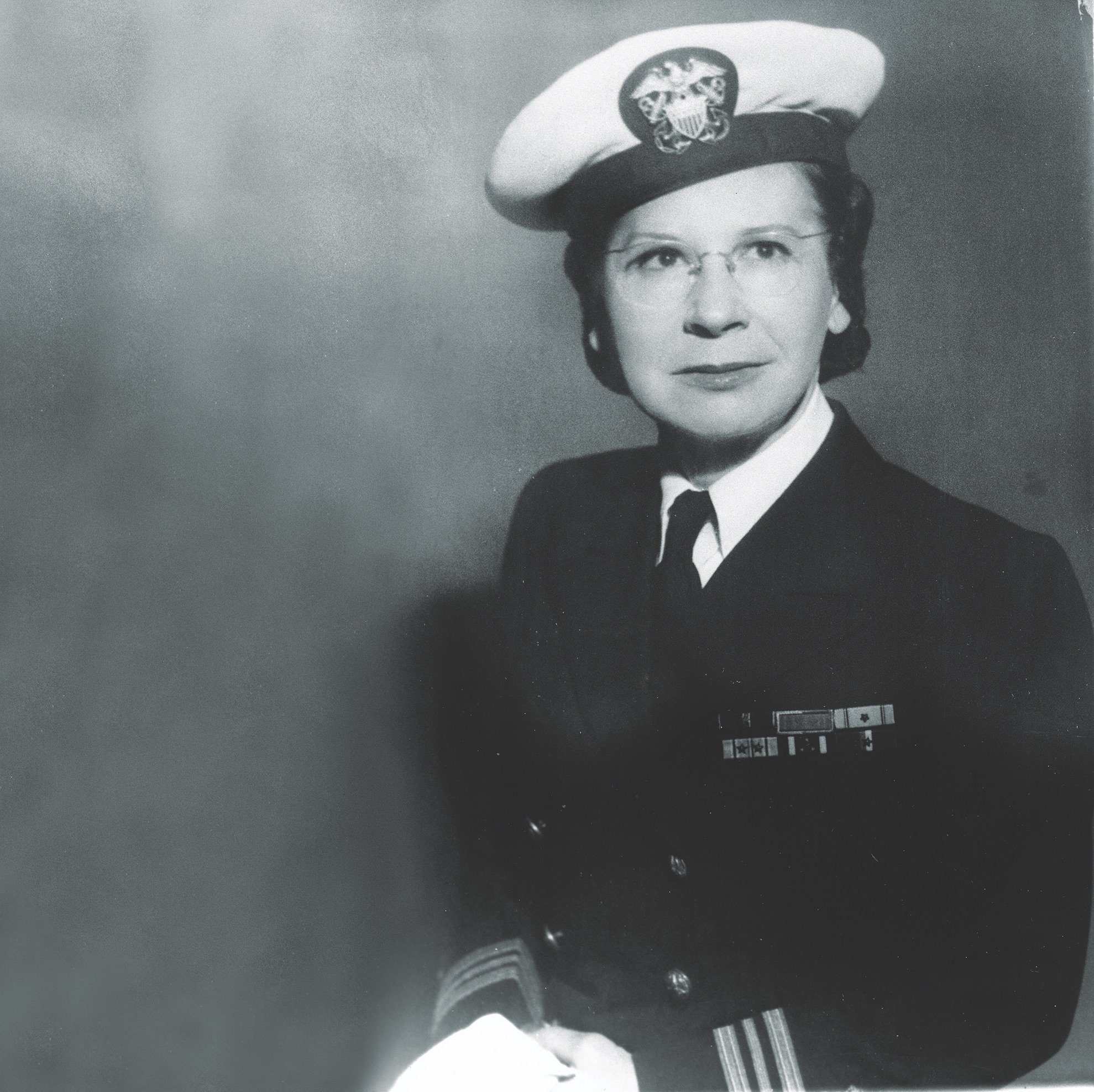In March 1942, soon after U.S. forces in the Philippines surrendered to the Japanese, Chief Nurse Laura Mae Cobb of the Cañacao Naval Hospital in Manila Bay was sent with 11 other nurses to a civilian internment camp on the grounds of Santo Tomas University. There 49-year-old Cobb directed her nurses to care for some 3,000 captive civilian men, women and children.
Many of the internees were alone, hungry and traumatized. At times they had only the kindness of a nurse on which to rely. In turn, the Navy nurses had Cobb to watch over them. Whenever possible, she squirreled away extra food, money and supplies. Though the Japanese forbade private papers of any kind, the chief nurse risked punishment by smuggling her nurses’ service records into camp. When the Japanese ordered Cobb to provide them an inventory of medicines, she had her nurses mislabel bottles of the antimalarial drug quinine as baking soda to protect it from being looted by the enemy. Had the Japanese discovered the deception, they likely would have executed the American chief nurse.
In May 1943 the Santo Tomas commandant announced he would transfer 800 male prisoners to Los Baños, a camp under construction some 40 miles to the south. That posed a dilemma, as the civilian physician accompanying the men did not have any medical personnel to assist him. The Army nurses interned at Santo Tomas had refused the assignment. Cobb asked her Navy nurses if they were willing to risk it, and they all agreed. Three civilian nurses joined them. On the morning the nurses left camp, someone managed to play “Anchors Aweigh” on the camp PA system, and the internees lined up to cheer. Cobb strolled out to the truck with her nurses’ service records hidden beneath her uniform blouse, a flower garland concealing the otherwise conspicuous rectangular imprint.
At the new camp the nurses cobbled together a makeshift hospital from scratch, fitting together pipes to make bed frames, mixing tree sap to create bandage adhesive and fashioning slings from donated scraps. Demand for the infirmary grew as the Japanese transferred ever more prisoners to Los Baños and a sadistic new officer took charge. Among other abuses, Lt. Sadaaki Konishi withheld salt from internees and reduced their food rations to less than 900 calories per person a day. Cobb and her nurses became increasingly important to the 2,100-plus men being starved to death.
Their deliverance finally came on Feb. 23, 1945, in a morning raid by U.S. paratroopers and Filipino guerrillas. The freed civilians were evacuated to the newly liberated Bilibid POW camp, just outside Manila. There the Navy nurses assumed five-hour shifts until Cobb insisted the women themselves receive the medical care they so badly required. None of the nurses weighed more than 100 pounds (some well under). One had undiagnosed tuberculosis, others beriberi. Cobb herself had an undiagnosed heart ailment and arthritis. The Navy soon evacuated the nurses stateside, where Cobb was promoted to lieutenant commander. Her foresight in hiding personnel records enabled her nurses to receive the back pay and promotions they’d missed while being held captive.
In September 1945 the Navy and Army presented Cobb and her nurses the Bronze Star with a gold star device (in lieu of a second award). While the intrepid chief nurse never considered herself a hero, the citation accompanying her medal praised her “dauntless determination, zealous efforts and unselfish devotion to duty in the face of unprecedented hardship.” Though she had hoped to return to the Philippines with the Navy, her arthritis proved too debilitating, and she retired at the rank of commander in 1947. Cobb spent nearly 30 years in the civilian nursing field. She died in 1981 at age 89.





